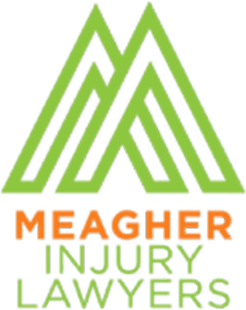Charles Jones Case
- Litigation is often the key to making out with a fair pay day in your accident injury case.
A good example of why this is the case happened in the case of one of my recent client’s, Charles.
- Charles was a healthy 21-year-old who had recently moved from California to Kentucky to find a job. He lived close to his workplace and typically rode his electric skateboard to work. On the day of his accident, Charles was on his way to a night shift when a careless driver hit him, knocking him into the air.
- He woke up in the hospital with a fractured spine, abrasions, and road rash. Fortunately, his injuries weren’t worse. After spending a few days in the hospital, Charles was discharged with a neck brace and attended only a couple of physical therapy sessions.
- Doctors cleared him of any brain injury, and probably because he was young, Charles made a remarkable recovery without the need for much medical treatment.
- After signing Charles up as a client, I immediately began investigating his case. I obtained the police report, but it didn’t include any insurance information for the driver. After digging further, I discovered that the driver’s vehicle had been insured by GEICO. However, after setting up a claim with GEICO, GEICO informed us that the vehicle wasn’t insured at the time of the accident, so I had to continue investigating.
- Eventually, I uncovered that the driver was delivering pizza for a major pizza chain. I contacted the pizza chain and demanded they turn the matter over to their insurer, which they did.
- Once we had the insurer’s information, I submitted a written demand, hoping for an offer to settle the case. Instead, the insurer requested more documentation and made no offer.
- At that point, I suspected the insurer was going to drag out the process and not be reasonable, so I filed a lawsuit against the driver and the pizza store.
- The insurer hired a defense lawyer, who sent written discovery questions for Charles to answer. My team assisted Charles with his responses, and we also sent discovery questions to the defendants.
- When we received the defendants’ responses, it became clear the insurer wasn’t going to offer a fair settlement. They disputed liability, claiming Charles was wearing dark clothing, making it hard for the driver to see him at night.
- The defense attorney argued that a jury in that part of Kentucky might not sympathize with Charles, as skateboarding was uncommon in the area. They believed the jury wouldn’t award much for his damages as they didn’t think people in the area would relate to Charles.
- As the case progressed, the defense attorney took Charles’s deposition, and I was there to defend him. I also deposed the at-fault driver, getting him to admit that he was using his cell phone at the time of the accident. This helped establish his liability, but the defense continued to argue that Charles shared some fault due to him wearing dark clothing and the use of a skateboard on the street at night.
- We eventually went to mediation, but the defense didn’t offer what we considered a fair settlement so the mediation ended with no settlement in place.
- So, we pushed the case forward toward trial. After several months of negotiations and holding firm on our demands, the defense finally offered a reasonable settlement. We were able to settle Charles’s case for $200,000 shortly before the trial date.
- Charles was ecstatic with the outcome, and the hard work we put into the litigation process paid off in securing a fair result for him.
- You see, filing suit and litigating an injury case against an insurance company is often crucial because insurance companies are typically focused on minimizing payouts rather than offering fair compensation upfront.
- In Charles’s story, despite clear liability on the part of the driver, the insurer initially stalled, requested more documentation, and failed to make a reasonable settlement offer. This is a common tactic insurance companies use to pressure injured victims into accepting lower settlements than they deserve.
- By litigating, we were able to gather and present stronger evidence, like the fact that the driver was distracted by his cell phone at the time of the accident. This admission significantly strengthened Charles’s case.
- Moreover, litigating forces insurance companies to take your case more seriously. When an injured party files a lawsuit, it puts pressure on the insurer to either negotiate in good faith or risk taking the case to trial, where they may face an even larger payout or put their insured in a risky situation.
- This proactive approach in pushing Charles’ case towards trial ultimately led to the insurer increasing their settlement offer to a fair amount, demonstrating how crucial litigation can be when insurance companies initially refuse to do the right thing.
- Now that you know that litigating your injury case may be crucial in order to get a good settlement offer in your case, you may wondering what are some other things you can do to negotiate a big payout in your injury case.
- And if that sounds like you then you should definitely watch this video about to pop up right here where I provide 5 tips for negotiating with the insurance company after a car accident.
- And for more helpful videos like this one you can subscribe to my channel right here.
- Lastly, if you’ve been injured in Kentucky, remember to Don’t Wait, Call Tate!
While Charles’ story is based on a true story, his real name is not being disclosed in order to protect his identity.
Disclaimer:
- This video is not legal advice. Always speak with a lawyer for your particular situation.




Recent Comments